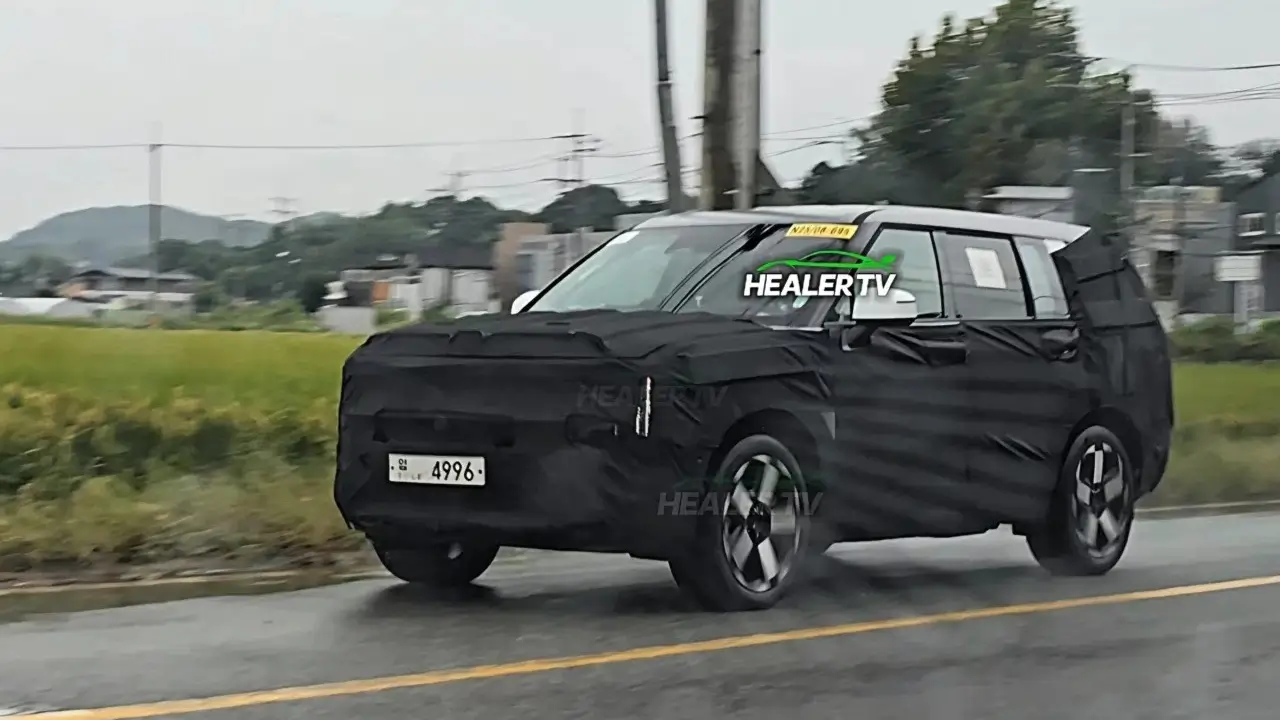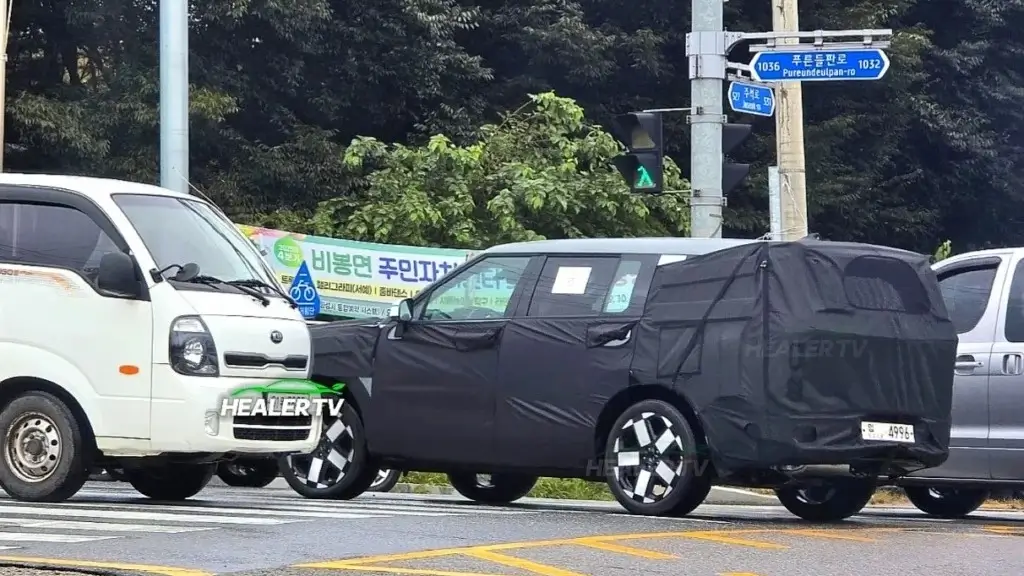The much-anticipated Hyundai Santa Fe facelift is finally making waves, signaling Hyundai strategic move to rejuvenate this flagship SUV amid evolving consumer preferences and intense market competition. Recognized for its bold, boxy design in its earlier iterations, the Santa Fe has struggled to maintain its allure against rivals like Kia Sorento, Toyota Highlander, and the ever-popular Honda Pilot.
The facelift highlights Hyundai dedication to adapting to modern trends, addressing past criticisms, and reasserting its position as a leader in the midsize SUV segment. With a sleek, more refined aesthetic and advanced features, the facelift aims to attract a broader audience while keeping loyal customers engaged. This comprehensive redesign is not simply cosmetic; it encompasses technological upgrades, comfort improvements, and enhanced driving dynamics, promising a compelling package for both urban dwellers and adventurers alike.
As Hyundai continues to evolve its global lineup, the Hyundai Santa Fe facelift exemplifies a brand committed to listening to customer feedback and integrating innovative solutions. From the transition of the front grille design to the overhaul of engine options, each element reflects a meticulous effort to elevate the vehicle appeal. Early sightings during testing sessions suggest that Hyundai is not only refining the Santa Fe look but also focusing heavily on delivering a smoother, more luxurious driving experience—indicators of Hyundai willingness to learn from past criticisms and adapt accordingly.
The facelift also signals Hyundai aim to bolster its market share in North America, Asia, and Europe by aligning the Hyundai Santa Fe facelift with its more premium models like the Tucson and Palisade, in both design language and technology.

Redesigning for 2027 – From Rugged to Refined in the Hyundai Santa Fe facelift
The most striking aspect of the Hyundai Santa Fe facelift lies in its radical yet tasteful redesign that redefines its presence on the road. Gone are the controversial, squared-off lines that once drew mixed reactions from critics and consumers alike. The new silhouette embodies a sleek, modern aesthetic with soft curves, elongated headlights, and a sophisticated front grille characterized by four slim, finely crafted bars. The incorporation of the “Art of Steel” design philosophy emphasizes elegance, giving the vehicle a premium look that could rival luxury SUVs without the exorbitant price tag. The bold LED daytime running lights nestled within the slender headlamps create a cohesive, high-tech visage, suggesting Hyundai commitment to innovation and style.
Further, the side profile demonstrates a clever use of proportions to create a sense of width and stance, making the Santa Fe appear more commanding yet approachable. The lower body moldings and sleek window line enhance the impression of strength, while the lowered rear-mounted license plate and horizontally connected taillights create a sense of unity and convey a futuristic yet functional feel. The rear diffuser, finished in matte black, coupled with the matte metallic rear bumper, adds an element of rugged sophistication. These thoughtful design choices illustrate Hyundai intent to transition Santa Fe from a utilitarian SUV to a high-end urban crossover that appeals to discerning urban drivers and adventure seekers alike.
Technological and Mechanical Advancements – Upgrading Interior Comfort and Performance
Beyond aesthetics, the Hyundai Santa Fe facelift introduces significant technological and mechanical upgrades designed to elevate driving comfort and performance. Notably, Hyundai has decided to replace the previous dual-clutch transmission (DCT) with an eight-speed automatic transmission featuring a CVT ecosystem, aiming to resolve the jerkiness that had plagued earlier models. This change will ensure smoother acceleration, quieter ride quality, and improved fuel efficiency—attributes highly sought after by modern consumers. The hybrid variant remains unchanged with a 1.6-liter turbocharged engine paired with a six-speed automatic transmission, highlighting Hyundai balanced approach—maintaining efficiency without compromising on power.

Inside, the cabin has been reimagined to match the exterior premium overhaul. Expect a larger infotainment touchscreen, possibly 12 inches, equipped with the latest connectivity features such as wireless Apple CarPlay, Android Auto, and over-the-air updates. The use of high-quality materials, ambient lighting, and ergonomic controls reinforce the vehicle upscale intentions, making every journey more comfortable and engaging. Hyundai also prioritized safety, integrating advanced driver-assistance systems like adaptive cruise control, lane-keeping assist, blind-spot monitoring, and a 360-degree camera for enhanced visibility. Personal insights suggest that these changes are more than superficial—they translate into a genuine future-proof vehicle that aligns with evolving market expectations and technological standards.
Personal Analysis – Will the Hyundai Santa Fe facelift Reclaim Market Dominance?
From a personal perspective, the new Hyundai Santa Fe facelift seems poised to turn the tide in Hyundai favor. The redesigned exterior and interior reflect a brand that listens to its customer base and acts decisively. The shift towards softer, sleeker lines makes the Santa Fe more competitive against newer entrants and luxury SUVs that prioritize elegance. By addressing earlier criticisms—such as the boxy design and transmission issues—Hyundai is reinforcing its commitment to quality, reliability, and style.
Furthermore, the strategic upgrade in drivetrains and safety features demonstrates Hyundai understanding of contemporary consumer priorities—smooth driving experiences, fuel efficiency, and pinnacle safety. While the diesel and hybrid options cater to different market segments, it’s the overall refinement and progression that will matter most to buyers. If Hyundai continues to innovate with such thoughtful updates, it’s reasonable to expect the Hyundai Santa Fe facelift to regain some lost ground and regain its position as a leading choice in its segment, appealing to both traditional SUV lovers and those seeking a more refined urban crossover.
Conclusion
The Hyundai Santa Fe is a significant step forward for Hyundai as it seeks to redefine its flagship SUV with a contemporary, sophisticated design complemented by technological boosts and improved driving dynamics. Moving away from its previous controversial aesthetic, Hyundai new direction embraces sleekness and elegance, aligning the Hyundai Santa Fe facelift with premium competitors and elevating its market appeal. Mechanical enhancements, particularly the switch to a more refined automatic transmission and upgraded safety features, demonstrate Hyundai commitment to delivering an improved driving experience.
Overall, this facelift signifies Hyundai strategic effort to reclaim its position in the competitive midsize SUV market, promising to be a compelling choice for consumers seeking style, comfort, and reliability. As the vehicle prepares for its official debut at the end of 2026 or early 2027, anticipation builds around whether this new Hyundai Santa Fe facelift will meet, or even exceed, customer expectations and pave the way for Hyundai continued success in the global automotive arena.
